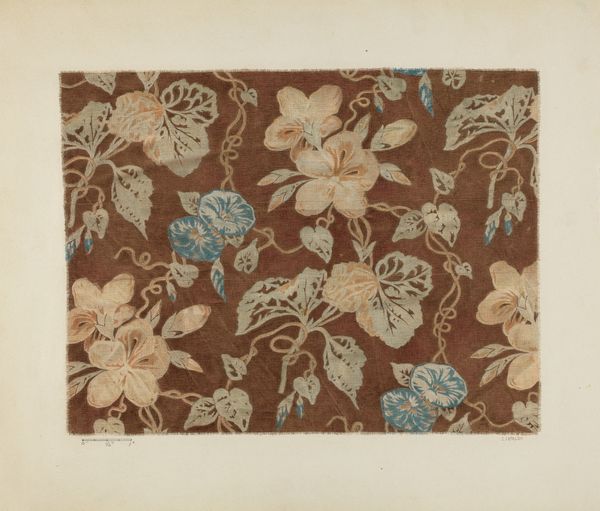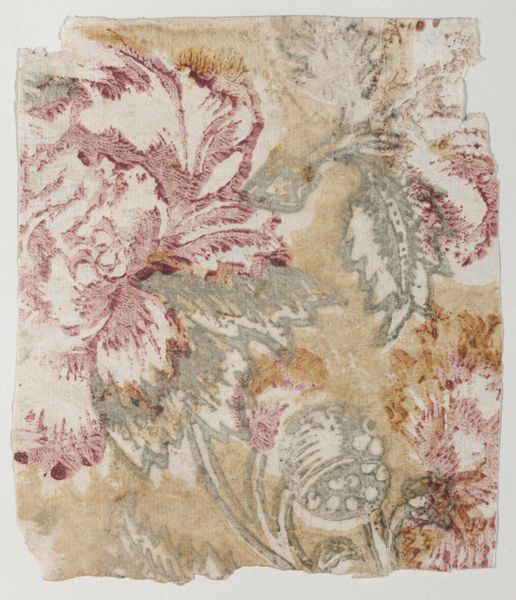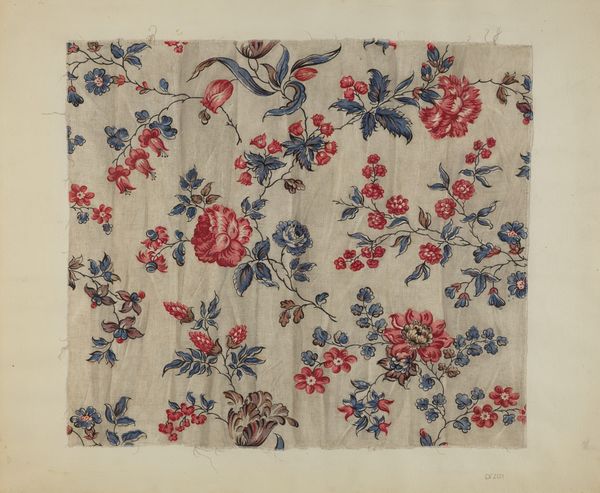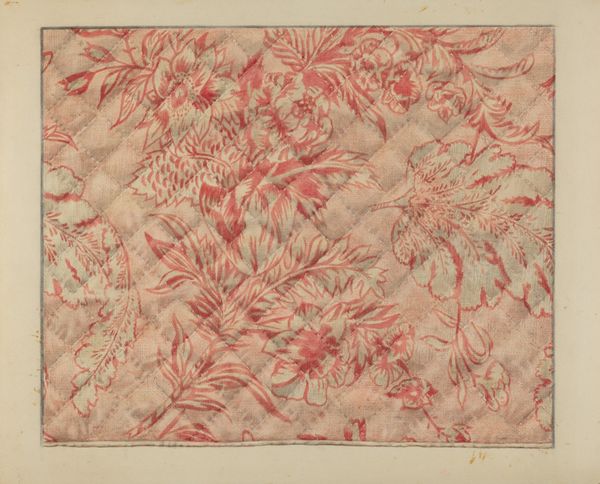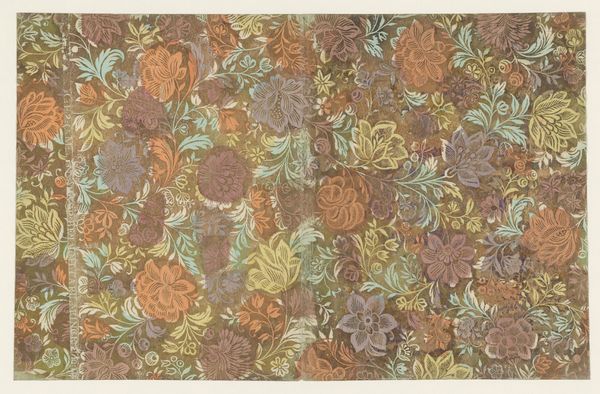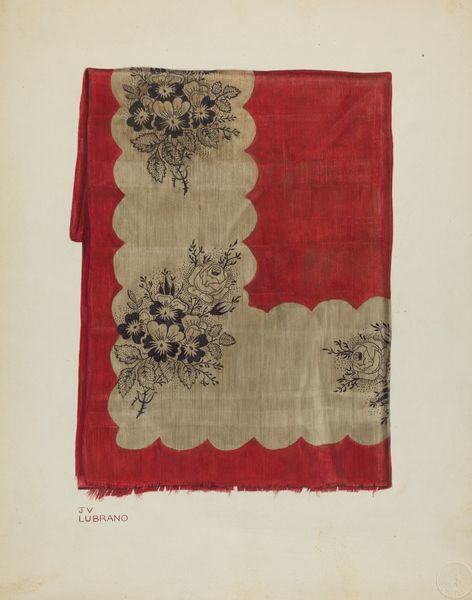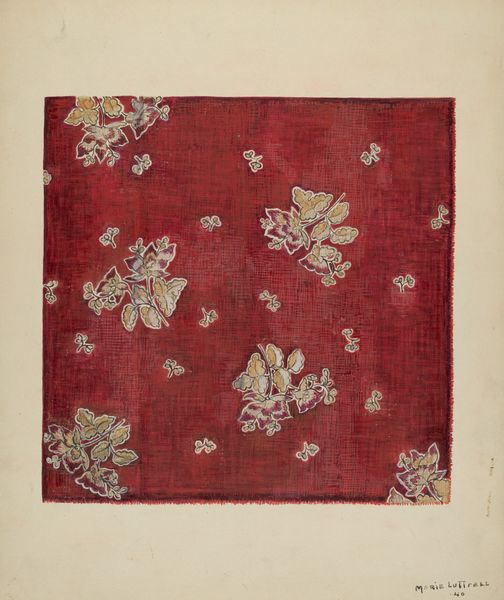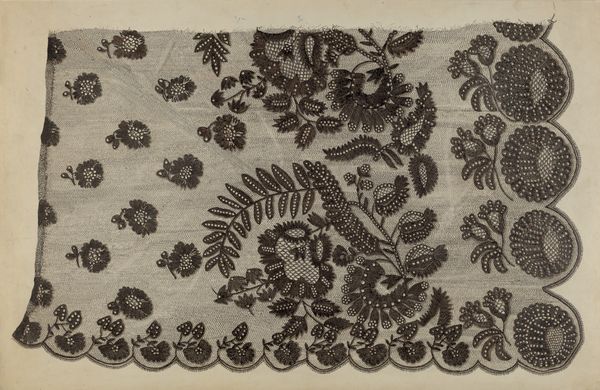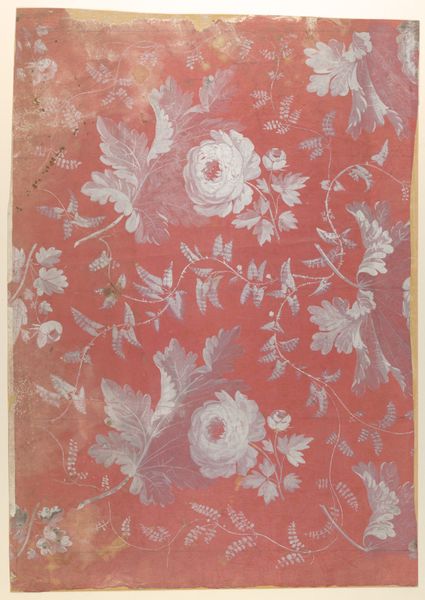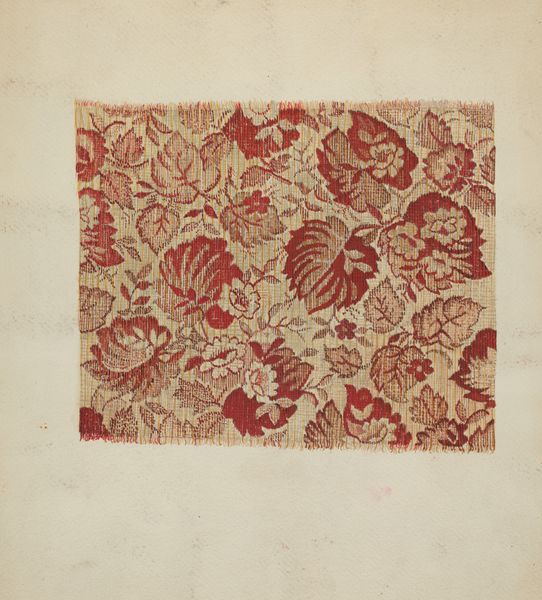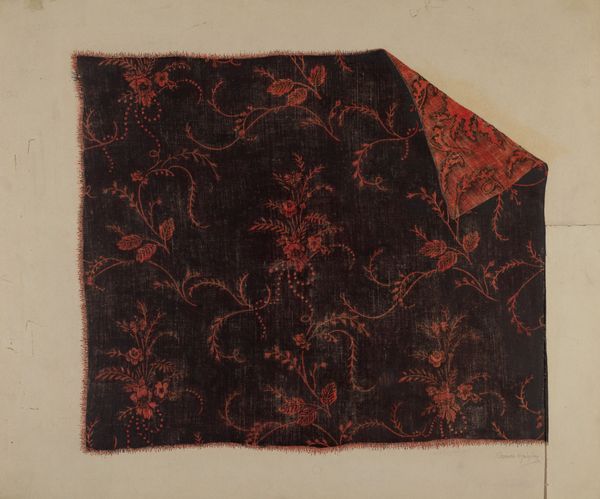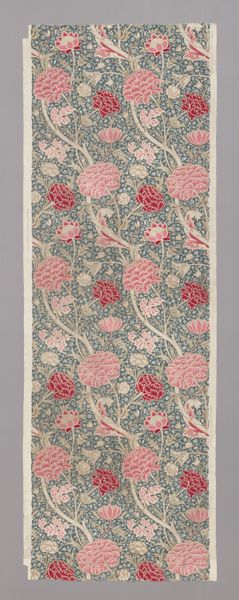
Dimensions: overall: 36.8 x 30.5 cm (14 1/2 x 12 in.)
Copyright: National Gallery of Art: CC0 1.0
Editor: Here we have "Printed Calico" from around 1937 by Arelia Arbo. It's a textile design, using drawing and watercolor techniques. The floral pattern is quite charming, but the color palette feels a bit muted. What stands out to you? Curator: The real story here is in the materials and the making. Consider this: calico, originally from India, was central to global trade and colonialism. This piece, made in the late 1930s, speaks to the industrial production of textiles. How do you think the method of production informs its message? Editor: That’s a great point. Seeing it as part of this global trade network does change things. I guess it makes the ‘organic pattern’ tag seem ironic, somehow? Curator: Exactly! Think about the labor involved. Was this designed for machine printing? By hand? The materiality belies a complex social context, far removed from idealized visions of the Arts and Crafts movement, although the organic pattern gestures to it. What assumptions do we bring when we see 'textile design'? Editor: I definitely see it differently now. I was initially focused on just the aesthetic appeal, but you've highlighted its connection to broader production and labor issues of the time. Curator: The muted colours you mentioned earlier also gain a new weight, a different impression from, say, a louder, machine made design. Editor: Absolutely. I am walking away understanding this piece, as much more than pretty flowers on fabric. Curator: I find that viewing the physical existence of objects allows us to connect more fully with these wider social implications. It has been a delight sharing that understanding with you today.
Comments
No comments
Be the first to comment and join the conversation on the ultimate creative platform.
